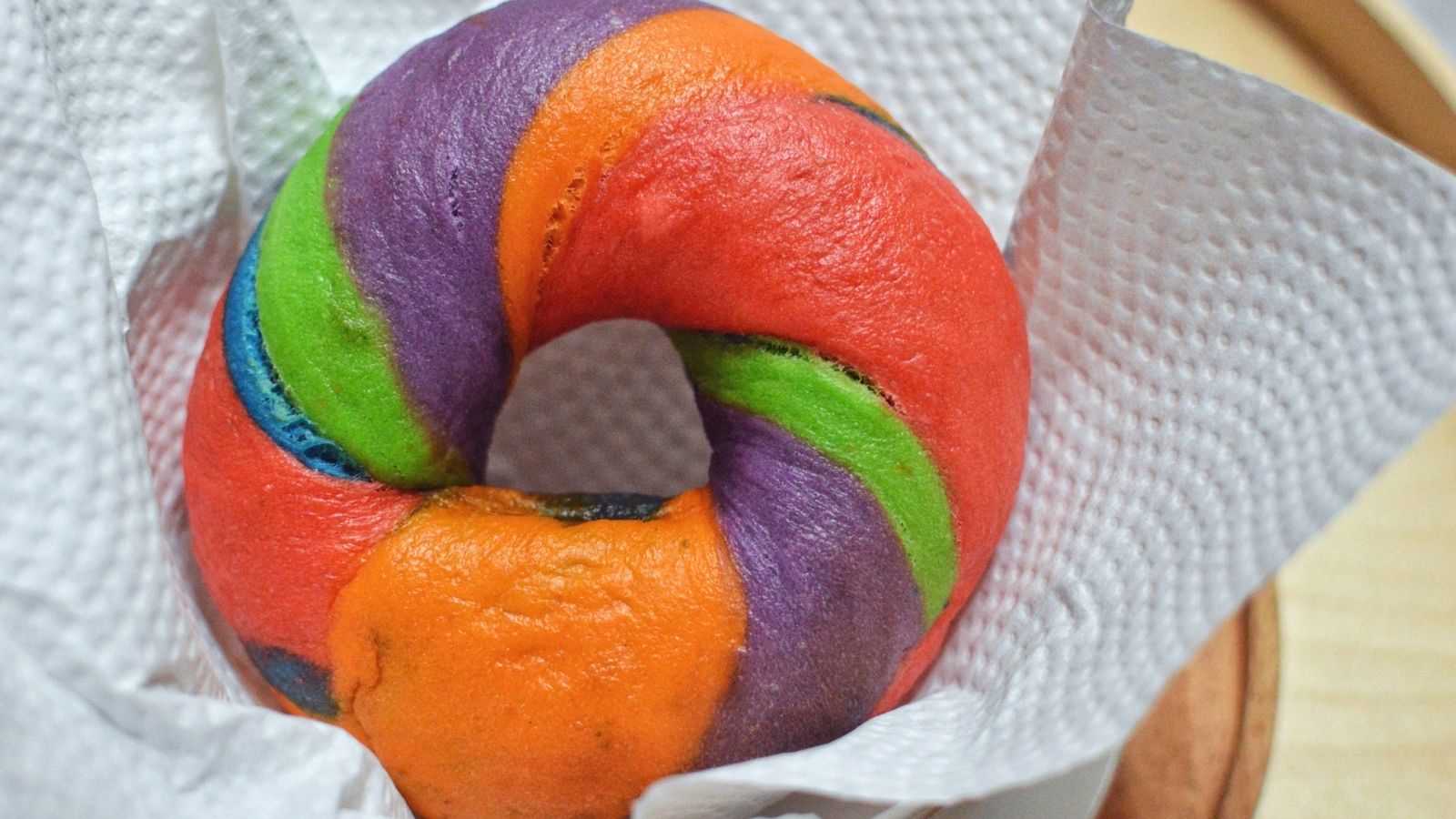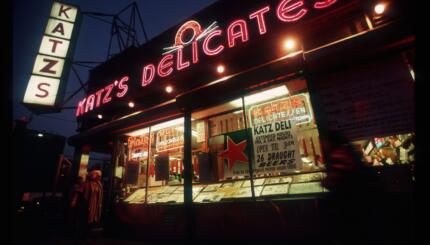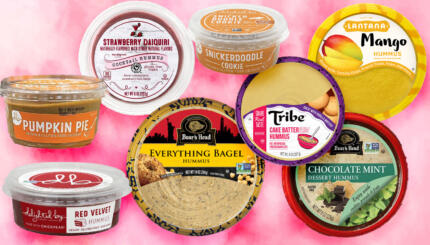I’m an avid fan of The Great British Baking Show, which is currently in its eighth season on Netflix. The show is such perfection, I can look past almost any minor flaw — like the constant changing of hosts or the way challah was snubbed during season five — because I just want to live in the British countryside forever, where carbs abound and all the contestants cheer each other on, while Prue makes wonderfully inappropriate jokes about nuts.
But this past week’s technical challenge was a true affront to one of my most beloved, and well-researched, carbs: the bagel. Or more specifically, a twisted rainbow bagel.
Let’s do a short recap. Bagels migrated to the United States and Canada from Polish Jews fleeing from pogroms and seeking a better life. This peasant food took on new life in America where it eventually got paired with some cream cheese, lox, capers, onions, everything seasoning, blueberries, and was rainbow-ized too. While the bagel is originally Polish, it is most closely associated with New York (or fine, Montreal, too).
There is another bagel tradition worth mentioning as part of this conversation: the London Beigel (pronounced bye-gull) which isn’t uniformly crusty the way New York-style bagels are, or sweet and chewy like the Montreal version. Piled high with salt beef and mustard, they are another beloved version of bagels, which also traveled to the U.K. by way of Polish Jews. But you would be hard-pressed to find them in a rainbow version, so we can assume the Great British Baking Show was inspired by American-style bagels.
Paul Hollywood, neither a New Yorker nor Jewish, is a recognized expert in bread. But it was clear from this technical challenge that he has no idea how to make a proper New York bagel. At some point while tasting the results of the challenge, he even commented that a crispy exterior means that the bagel is overdone. I’m not sure he has ever visited New York City, or even tasted a bagel.
Making a great bagel is much more than just a recipe itself: it’s very much about the time and technique. One of the most important parts of a great, crusty-yet-chewy bagel is the amount of time the dough rises, or ferments. Almost no respectable bagel maker would allow the dough to rise less than 12-24 hours. Great bagel makers, including my friend Peter Shelsky of Shelsky’s in Brooklyn, lets his bagels sit for up to three days before boiling and baking. My own recipe calls for an overnight rise in the fridge of 12-18 hours.
And so I knew that to make a bagel in the total allotted time of 2 hours and 45 minutes was just ridiculous. And the result of the bakers’ bagels proved that it was a disaster.
High-gluten flour and diastatic malt barley powder, or malt barley syrup, are the two most important ingredients for making an authentic bagel. While Montreal-style bagels typically take a little bath in honey-infused water, New York-style bagels get dipped in water plus malt barley. You can see from Paul Hollywood’s recipe that neither malt barley nor honey are included either in the dough or the bath.
Lastly, while rainbow bagels are fun and beautiful in a clown-like, Instagram-inspired sort of way, they are also an insult to the integrity of a good bagel.
People on Twitter had a lot to say about the bagels:
We, like many people, are watching the Great British Baking Show, & I have come to say that I find rainbow bagels antisemitic.
— Elizabeth McCracken (@elizmccracken) October 10, 2020
Also:
this rainbow bagel technical challenge on bake-off is anti-semitic
— alex duner (@asduner) October 13, 2020
And this, too:
I’m honestly just offended on behalf of New York City that Great British Bake-off is doing rainbow bagels.
— Natalie Fertig (@natsfert) October 11, 2020
Look, I’m not going anywhere — Great British Baking Show love forever. But it’s high time for Paul to visit New York City and taste a true, authentic, crusty bagel.
Interested in making New York-style bagels? Try this recipe from Cooks Illustrated.





